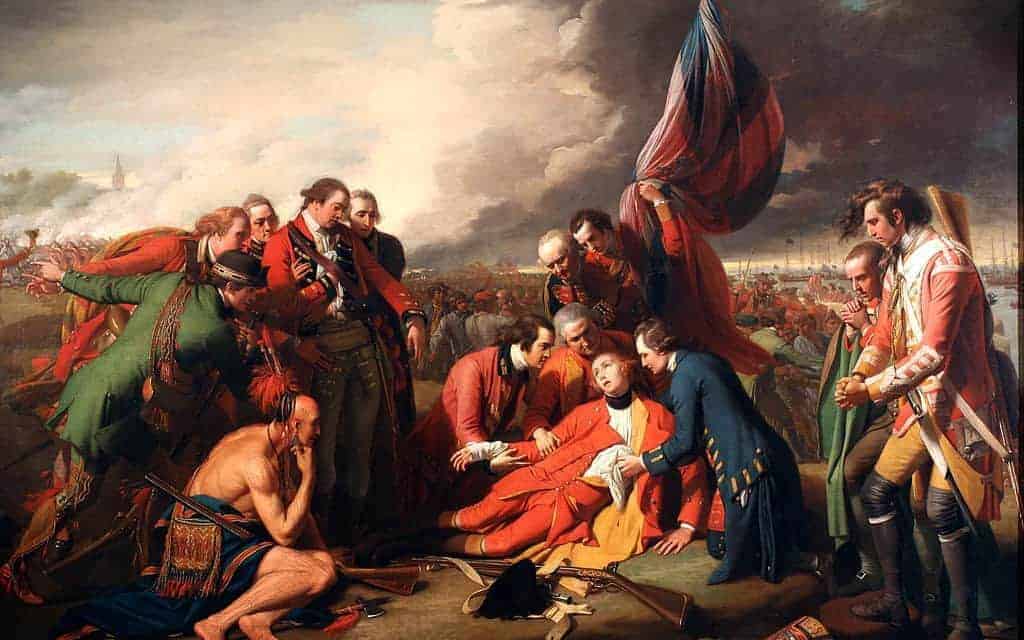The word rivalry seems too feeble to describe the nearly thousand relationship between Great Britain and France, one of animosity and frequent hostility. For nearly five centuries the Kings and Queens of Great Britain styled themselves as the sovereigns of France and Navarre. The Norman invasion in the eleventh century brought significant lasting changes to Britain. The Hundred Years War, actually a series of wars which ran from 1337 to 1453, was a conflict over which Royal House had the right to occupy the throne of France. At the time the Kingdom of France was the largest in Western Europe.
After the discovery of the New World Great Britain and France competed for empires in North America, later expanding their conflicting ambitions to India, the Pacific, and Africa. Numerous wars were fought between the two countries, wars of conquest and defense. The French supported the Jacobite rebellion against the House of Hanover, and Scottish exiles found safe haven under French protection. Gradually the balance of power in Europe shifted to Britain and France as their mutual rivalry strengthened them at the expense of Spain, Portugal, and the Dutch. The relationship between Great Britain and France had a significant impact on the birth of the United States, and its expansion into a world power.

Here are ten aspects of the relationship between Great Britain and France which had a significant impact on world history.

Universal Monarchy
The rivalry between the English and the French was already more than six centuries old when Louis IVX ascended to the throne of France in 1643. Since the end of the dynastic conflicts of the Hundred Years War England and France had often worked together, albeit warily to limit the strength of Spain, wealthy through the precious metals looted from its empire in the New World. In 1648 the Treaty of Westphalia (actually three separate treaties) finally brought to an end the more than eight decades of bloody religious wars on the European continent. France began to flex its muscle on both the continent and in the New World.
England had become more parliamentary in the functions of its government, to the point of having executed its King, Charles I, in part for exceeding his authority. The Glorious Revolution had deposed another King, James II, and he had fled to the protection of his cousin, Louis IVX of France. The French King on the other hand retained full monarchical authority (though through a regency until Louis came of age). There were religious differences between the nations as well, largely Catholic France considered the English heretical, while the Protestant English feared the influence of the Pope on international affairs. The British were concerned that a Catholic Monarch could hold sway over all of Europe.
While Spanish power was at its height England often allied with France to check the power of the Catholic Spanish. As Spain’s power ebbed and its influence dwindled, France under Louis IVX stepped into the gap, and the English fears of a universal monarch, a single sovereign ruling all of Western Europe, shifted to the French King. The foreign policy of Great Britain became one of containing French power, both on the continent and in the New World. The French considered the British to be a nation which supported piracy through its large naval fleet, which preyed upon French possessions in New France.
England maintained a large navy but a relatively small army, and its policy was to create alliances with continental powers to check the power of France. In 1688 England allied with Spain, Austria, the Dutch Republic, the Holy Roman Empire, and Savoy, in a coalition against the French. The resulting nine year war was the first of the English-French conflicts to include fighting in the New World. The War of the League of Augsberg, as it became known in Europe, was known as King William’s War in New England. The war also spread into the Caribbean and India, as well as into the Spanish possessions in what is now South America.
The result of the war was expansion of French territory at the expense of the German states of the Holy Roman Empire, minor territorial concessions by France to Spain, and little else. It established a pattern which continued for the next 125 years of wars between France and England, with the British attempting to check French power and influence in Europe and around the world. Most of the wars settled little, and the treaties which ended them often lay the groundwork for the next war. After the War of the League of Augsberg the conflicts between France and England were based on the creation of empires.

